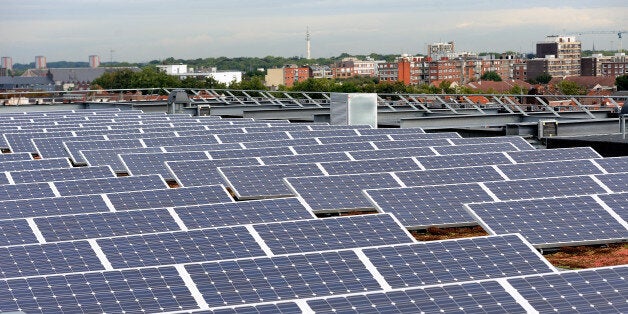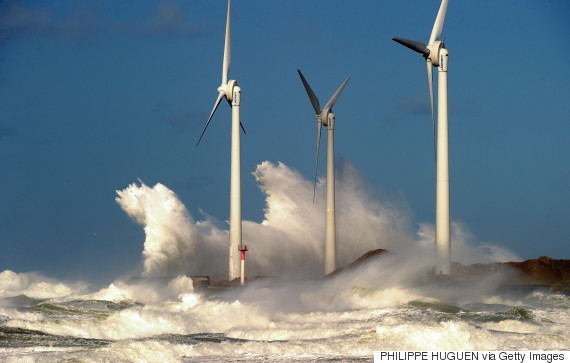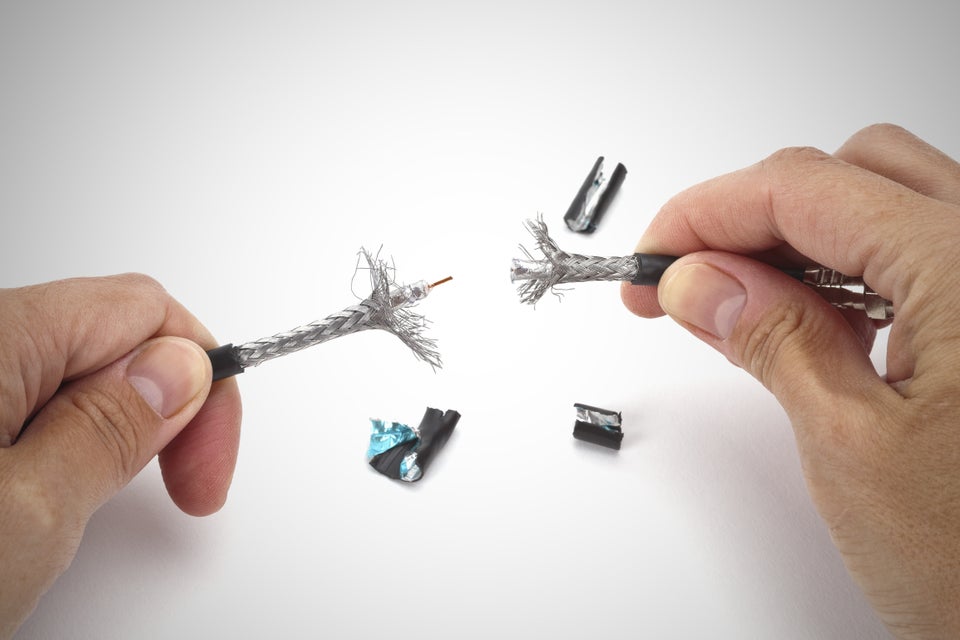
LILLE, France -- Since late 2012, the Nord-Pas-de-Calais region of France has been part of a national push to establish a transition to clean and renewable energy -- and also to design a new model of development. This adventure is right in the footsteps of the process Jeremy Rifkin describes in his WorldPost series on the Third Industrial Revolution.
So, what's happening here? As of now, our estimate is that there are about 300 projects that are in one way or another related to the Third Industrial Revolution.
Every week, in a continuous flow, numerous individuals or small companies bring their innovative ideas to the overall "TIR basket." They need help or counseling and we have developed the means to do so, but they share one characteristic: they are all enthusiastic.
Many projects are related to urban development and renovation. These projects focus on energy consumption and aim to decrease greenhouse gas emissions and provide work for construction companies and related stakeholders. Improving the living conditions and health of individuals in our region are expected direct consequences of many of these projects.
Improving the living conditions and health of individuals in our region are expected direct consequences of many of these projects.
We also launched a globally focused "zero-carbon university" program whose goal is to involve the 150,000 students of our universities in an holistic approach that focuses on building renovation, development of distributed renewable energies with storage and smart grids on our campuses and also alternative mobilities. The first projects are in the design phase and they look very promising.
In the health sector, a new hospital is being designed: It will be fully energy-autonomous by 2050 or before, and it will also be a pioneer in the use of eco-materials and life-cycle analysis. It proposes an evolutive design, capable of integrating new technologies without heavy restructuring. It will include the latest and best information technologies and serving, at the same time, patients and medical staff. Other hospitals will follow, taking advantage of this first experience.
In a nearby former mining area we are developing a master plan for a biosphere valley that we have named the "green archipelago." We will collaborate with the Louvre-Lens museum, renovated neighborhoods, photovoltaic farms, the new hospital and several other projects in an "Internet of Things," combining the three Internets that Rifkin discusses in his series to the greatest advantage of those who live and work there.

What does this mean? It means that during the last two years we have seen the progressive build-up -- it's far from finished -- of ideas that we had developed with Jeremy Rifkin, and that we continue to work out with him. In a certain way, Nord-Pas-de-Calais may be considered the first European living laboratory of the Third Industrial Revolution. And this movement is blossoming in a much stronger than expected way.
But how did it happen?
A year to write the master plan
It all started in 2012 when Rifkin was invited to the World Forum for a Responsible Economy in Lille to present his vision of a Third Industrial Revolution. We quickly agreed that it would be extremely interesting if we could develop a master plan for our region. We rapidly decided to entrust Rifkin with a mission to make our region a place for the Third Industrial Revolution, with two main goals in mind:
- Set the conditions for a new, decarbonized economic development with a long term vision.
- Start a social, economic and environmental transition to create jobs and restore activity.
At the beginning of 2013, more than 125 professionals from local authorities, the economic and industrial world, energy companies and also representatives of centers of excellence and competitiveness came together and formed working groups. They were the permanent interlocutors for Rifkin, challenging his ideas and working with his team.
On Oct. 25, 2013 the master plan of the Nord-Pas-de-Calais region was presented by Jeremy Rifkin during the World Forum. The approach was bottom-up, public and private, economic and political -- all working hand in hand. At the end of 2013 the challenge was clear and well defined by this shared Master Plan for the Third Industrial Revolution in Nord-Pas-de-Calais.
Six months to get some tools
- Energy efficiency.
- Mobility.
- The development of smart renewable energies.
All of which, we hoped, would be compatible with the five pillars of the TIR. Today we can say that we have both the information and the organization necessary to implement, monitor and evaluate all projects individually.
A joint working group between Nord-Pas de Calais Regional Council and CCI Nord de France has identified the necessary sources of funding. These funds rely on existing devices, but also on the combination of public and private investors in a specific fund that will launch at the beginning of 2016 with an initial sum of 50 million euros, and an expected multiplying factor of one to five. Among other innovative tools, a popular savings account has also been started. It has collected, in the past nine months, 7 million euros for TIR projects.
A work in progress
In 2013 we had built up a common vision, but we were still in a locked room. Since then, the TIR master plan, combined with our will to make it happen on concrete projects, has allowed us to open door after door, and each time what we discover behind the door is motivating, full of promises, full of questions and answers.
For sure, a movement has been launched. It is rallying and unifying. The risks that we take in our region by pursuing this vision is incomparably lower than it would be if we did nothing. Our regional consciousness -- this ambition worn by women and men who wanted it and who live it today -- finds its resonance in similar choices made by many cities and countries, communities, regions of Europe and of the world, who have all decided to take their future in hands on the basis of ideas that get a little more feasible every day.
We believe that the progress of our ideas is the mark of a highly responsible and sensible attitude that calls into question fundamental industrial and development schemes that, if fruitful in the past, have now become totally obsolete.
Much remains to be done to implement what we have considered, but we can say for sure that every day women and men work to implement, test and advance the Third Industrial Revolution in the Nord-Pas-de-Calais region. The Internet of Things and the discovery of the path to the zero marginal cost society that Jeremy Rifkin announces is already coming into being.
Also on WorldPost:
